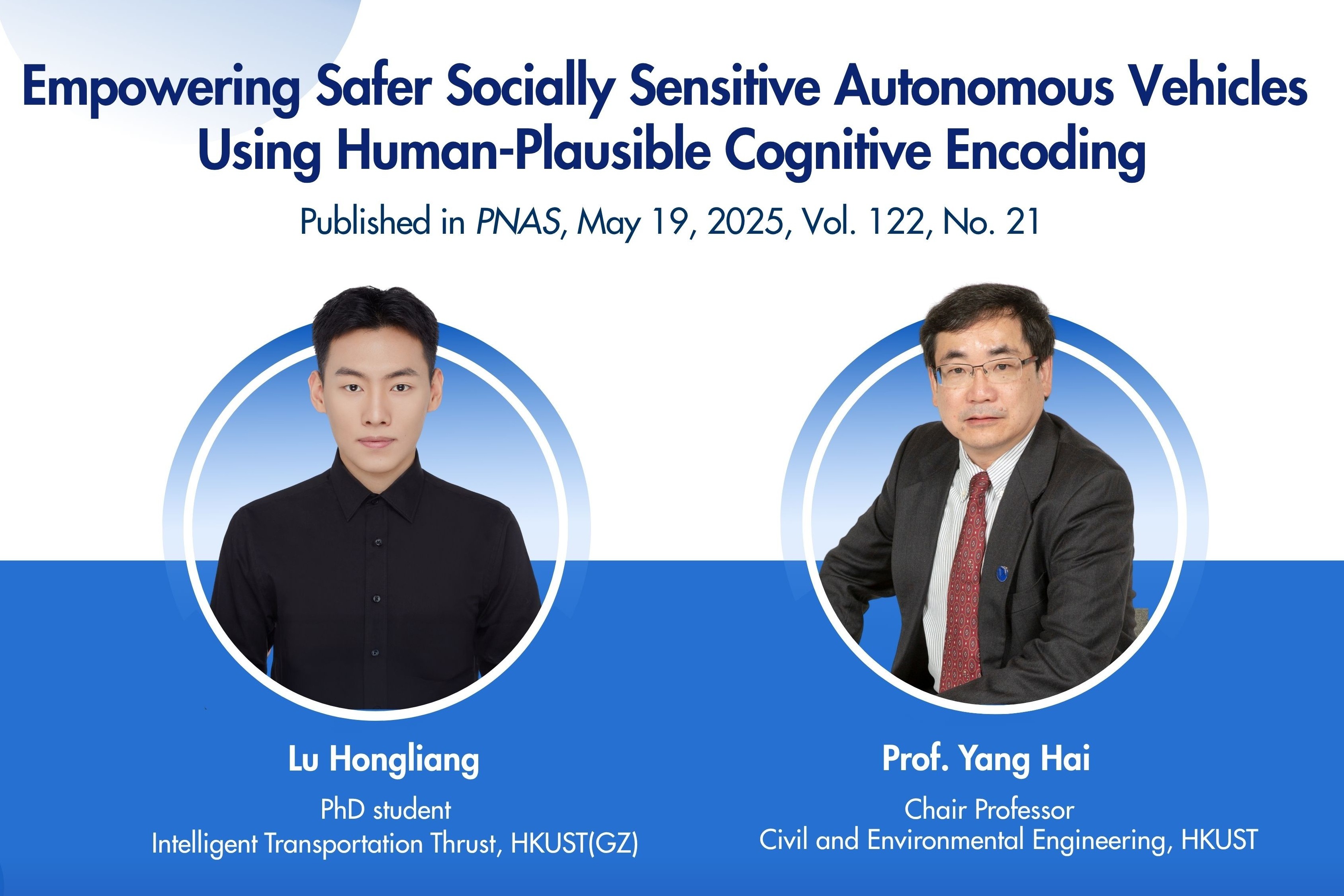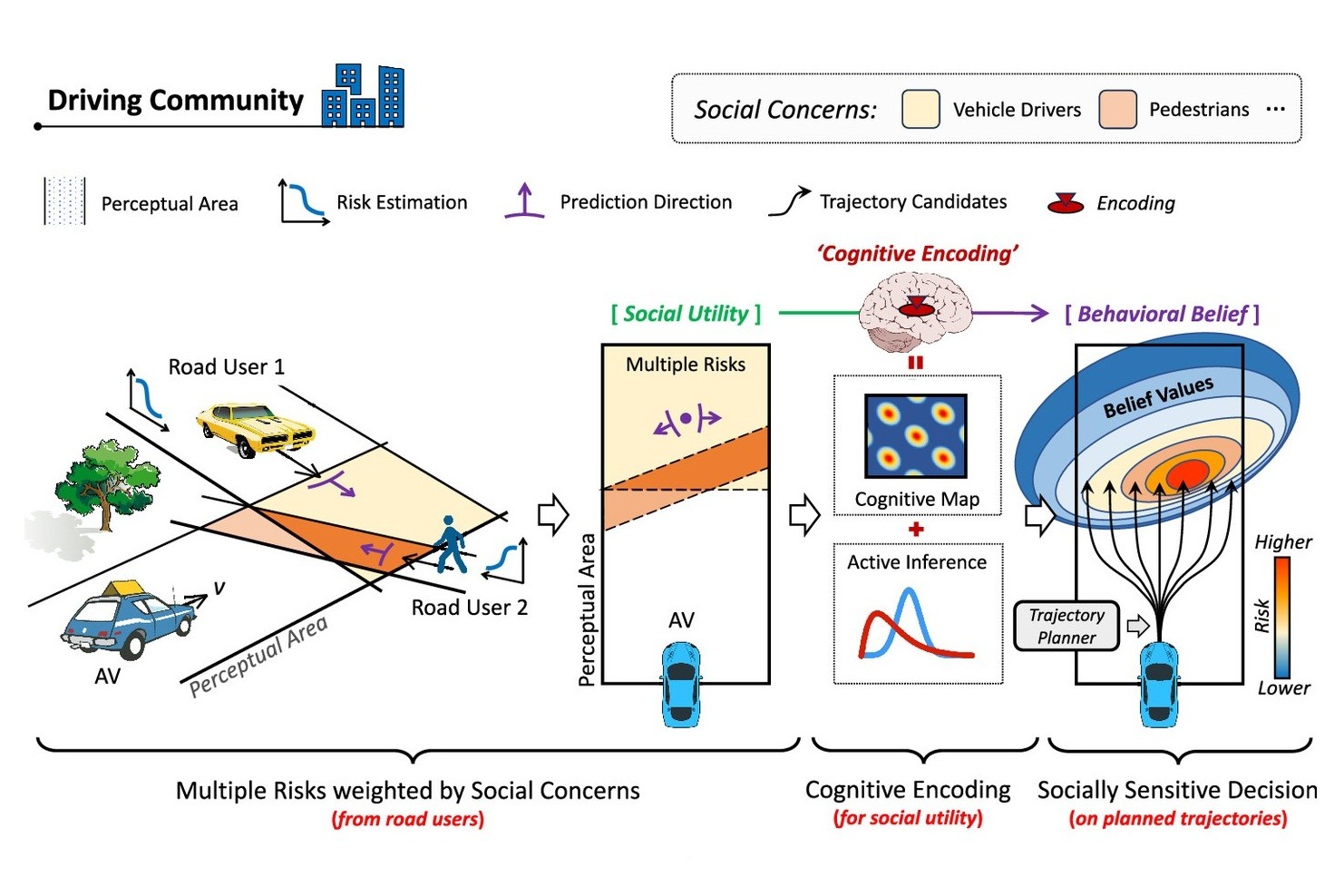HKUST Engineering School Introduces Human-Like Driving Technology for Autonomous Vehicles
Self-driving cars will soon be able to “think” like human drivers under complex traffic environments, thanks to a groundbreaking cognitive encoding framework built by a multidisciplinary research team from the School of Engineering at the Hong Kong University of Science and Technology (HKUST). This innovation significantly enhances the safety of autonomous vehicles (AVs), reducing overall traffic risk by 26.3% and cutting potential harm to high-risk road users such as pedestrians and cyclists by an impressive 51.7%. Even the AVs themselves benefited, with their risk levels lowered by 8.3%, paving the way for a new framework to advance the automation of vehicle safety.
Existing AVs have one common limitation: their decision-making systems can only make pairwise risk assessments, failing to holistically consider interactions among multiple road users. This contrasts with a proficient driver who, for example, can skillfully navigate an intersection by prioritizing pedestrian protection while slightly compromising the safety of nearby vehicles. Once pedestrians are confirmed to be safe, the driver can then shift focus to nearby vehicles. Such risk management ability exhibited by humans is known as “social sensitivity”.
To empower AVs with social sensitivity, a research team led by Prof. YANG Hai, Chair Professor of the Department of Civil and Environmental Engineering at HKUST, drew inspiration from neuroscience, human cognitive processes, and ethics to develop a human-plausible cognitive encoding scheme. This system enables AVs to perceive, evaluate, and behave in a way resembling a thoughtful human driver.
This novel system integrates three innovative features:
- Individual Risk Assessment – Evaluates the risk faced by each road user, including pedestrians, cyclists, motorcyclists, and nearby vehicles. This involves assessing their speed, distances from one another, and behavioral predictability. For example, a child walking near the road would be considered high risk.
- Socially Weighted Risk Mapping – Adds an ethical layer to decision-making by prioritizing vulnerable participants’ safety. In practice, it means the AV might yield to a pedestrian even when technical rules allow it to proceed.
- Behavioral Belief Encoding – Predicts how the AV’s actions will affect the overall traffic situation. For instance, it considers whether a quick lane change might cause nearby drivers to brake suddenly or increase congestion.
To determine the safety performance of this cognitive encoding scheme, the research team evaluated the new framework using 2,000 benchmark traffic scenarios, and the results showed that the framework reduced overall traffic risk by 26.3%. Remarkably, these safety improvements came with better operational efficiency. In the abovementioned simulations, AVs equipped with this system completed driving tasks 13.9% faster on average, demonstrating that ethical driving and performance can go hand in hand.
“By emulating the human capacity for holistic risk processing and moral reasoning, we enable AVs to behave more responsibly in ethically ambiguous situations, such as congested intersections or near schools,” said Prof. Yang.
“Our framework is designed to be flexible and adaptable to meet different regulations and social norms. For example, while some countries prioritize protecting vulnerable road users, others place greater emphasis on traffic flow efficiency.” Prof. Yang added, “Additionally, legal interpretations of accident liability vary across jurisdictions. Our system can adjust weightings, enabling AVs to drive like locals and making global deployment more feasible.”
This pioneering study was conducted in collaboration with Hong Kong University of Science and Technology (Guangzhou), Southeast University, Beijing Institute of Technology, Tsinghua University, Tongji University, and the University of Washington. The full paper, titled “Empowering Safer Socially Sensitive Autonomous Vehicles Using Human-Plausible Cognitive Encoding”, was recently published in the prestigious journal Proceedings of the National Academy of Sciences (PNAS).
As the next step, the research team is developing a large-scale dataset representing diverse regional driving patterns and social expectations. They are also in discussion with potential collaborators to support future integration and testing efforts.












